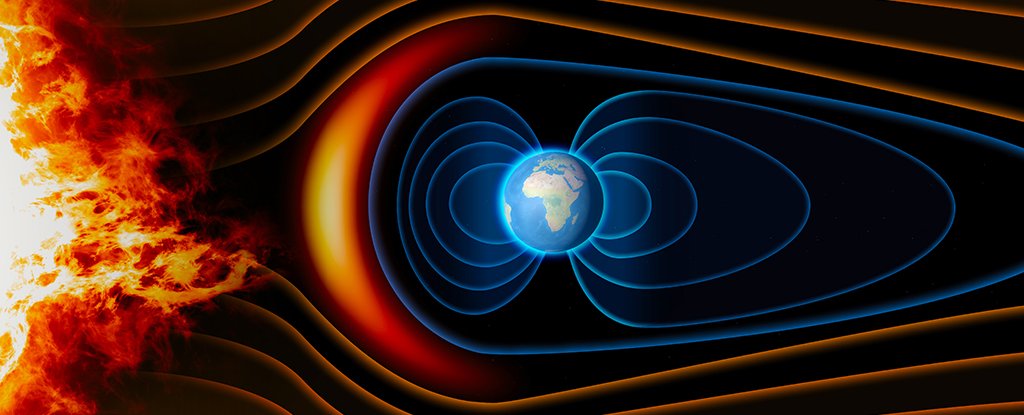
We know that the Earth’s magnetic field is always changing in its direction and strength. The rapidity with which these changes are taking place is of great interest, as this planetary feature keeps us protected from violent cosmic radiation.
Now, a new analysis of ancient lava flows in the east of Scotland, which filled some crucial blanks in our magnetic field history, has supported previous research pointing to a cycle of 200 million. years during which the field weakens and strengthens again.
The team also used the magnetic history they found buried in the geological record to check other measurements made over the past few decades and to trace a history of the Earth’s magnetic field dating back some 500 million years.
“Our findings, when considered in conjunction with existing data sets, support the existence of an approximately 200 million-year-long cycle in the strength of the Earth’s magnetic field related to the Earth’s deep processes.” , says paleomagnetist Louise Hawkins, of the University of Liverpool in the United Kingdom.
“Because plate tectonics destroys almost all of our evidence of processes inside the Earth, preserving this signal for the Earth’s interior is extremely valuable as one of the few limitations we have.”
Techniques of thermal and microwave paleomagnetic analysis were used in rock samples from ancient lava flows, with the alignment of mineral crystals inside that revealed the state of the Earth’s magnetic field at the time they formed. originally.
The team discovered that between 332 and 416 million years ago, there was a drop in the magnetic field that coincides with another 120 million years ago. During the previous period, now called the Middle Paleozoic Low Dipole (MPDL), the field surrounding the Earth was about a quarter of the force it is today.
These dates coincide with the 200 million-year cycle and offer experts some important developments on how the magnetic field behaved more than 300 million years ago, down to a remarkable Supercron, the name given to an extended period. of time in which the field remains stable.
“This extensive magnetic analysis of the lava flows from Strathmore and Kinghorn was key to filling the pre-Kiman Superchron period, a period in which geomagnetic poles are stable and do not rotate for about 50 million years,” says Hawkins.
If this cycle is kept going, and the magnetic changes or inversions of the magnetic pole tend to occur every 200,000-300,000 years, we actually owe another one, much to the concern of scientists, who are unsure of the effect it will have on all the technology and gadgets we obviously didn’t have the last time it happened.
The more we know the history of the Earth’s magnetic field in general, the better we can predict what it will do next. If our force field against space radiation begins to develop problems, we will need to know about it as soon as possible.
There was also another additional finding for the research: it has previously been thought that changes in the orientation of the magnetic field occur when the field is weaker, and this is another hypothesis that makes the new data make a backup.
“Our findings also provide more support than a weak magnetic field associated with pulse inversion, while the field is generally strong during a Superchron, which is important as it has been shown to be almost impossible to improve the inversion record. before about 300 million years ago, ”Hawkins says.
The research has been published in PNAS.